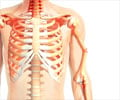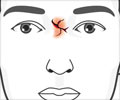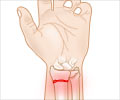Facial fractures from motor vehicle crashes appear to be decreasing, most likely due to design improvements in newer vehicles, according to a report in the May/June issue of Archives
A report in the May/June issue of Archives of Facial Plastic Surgery, one of the JAMA/Archives journals, has said that fractures from motor vehicle crashes appear to be decreasing in recent times. This may be attributed to design improvements in newer vehicles.
Facial trauma is the most common injury among individuals involved in motor vehicle collisions, according to background information in the article. Fractures to the face often occur simultaneously with other injuries, including damage to the eyes and brain. In 2000, the National Highway Traffic Safety Administration estimated that facial injuries cost between $9,000 and $725,000 per injury in lost productivity, medical costs, emergency services and other expenses.Brian T. McMullin, M.D., of the Medical College of Wisconsin, Milwaukee, and colleagues analyzed records from a national database of individuals (drivers and front seat occupants) with facial fractures following motor vehicle crashes. Between 1993 and 2005, 167,391 individuals involved in collisions had one or more facial fractures, 55,150 had skull base fractures (breaks in the bones of the skull) and 196,855 had nasal fractures.
Each year during that time period, the incidence of facial fractures decreased. In addition, a decline in the probability of injury was associated with newer car models. "As older cars are scrapped and more vehicles with next-generation safety features enter the vehicle fleet, we would expect decreasing injury probabilities and ultimately overall decreased injury incidence for year-to-year trends," the authors write.
Individuals involved in side-impact collisions, in vehicles in which speed increased as a result of collision, who were taller or who collided with a stationary object, light truck, sports utility vehicle or van were significantly more likely to sustain facial fractures. "Occupants who were restrained with seat belts only, as well as those restrained with seat belts and air bags, were significantly less likely to have facial fractures," the authors write. "Air bags alone were not associated with a reduced probability of facial fractures, and there was no difference in injury probability between sexes or based on occupant weight."
"Restraint use continues to be the most significant element for facial and skull base injury prevention, and more research is necessary to elucidate the mechanisms for facial and skull base fractures in side impacts, as well as to determine the effectiveness of side impact supplemental restraint systems," they conclude.
Source-Eurekalert
TAN















